- Guangxi -
Guangxi is located on the border of several regions. The Vietnam, Guangdong, Guizhou, also Hunan and Yunnan encircle this Chinese countryside. Even within this Guangxi Zhuang Autonomous Region, landscapes and cultures are plenty. To the North, it is a steep area with Karst peaks, rivers, verdant mountains and rice terraces fields that await adventurers. The South is more open to a journey of relaxation even if cascades and waterfalls are abundant.
Although a remote province of China, Guangxi is not less important than others. With the past several thousand years, Guangxi has been important in the history of China. Initially the land of conquest for emperors, then land retirement for minorities persecuted by Northern ethnic groups, Guangxi had been the seat of the Taiping rebellion, which was rife in China for more than 20 years.
Today, although bordering the wealthy province of Guangdong, Guangxi survives only thanks to the natural resources and the influx in tourism. It is easy to understand when you see the beautiful, natural landscape and its cultural heritage why this place is so fascinating to visitors.
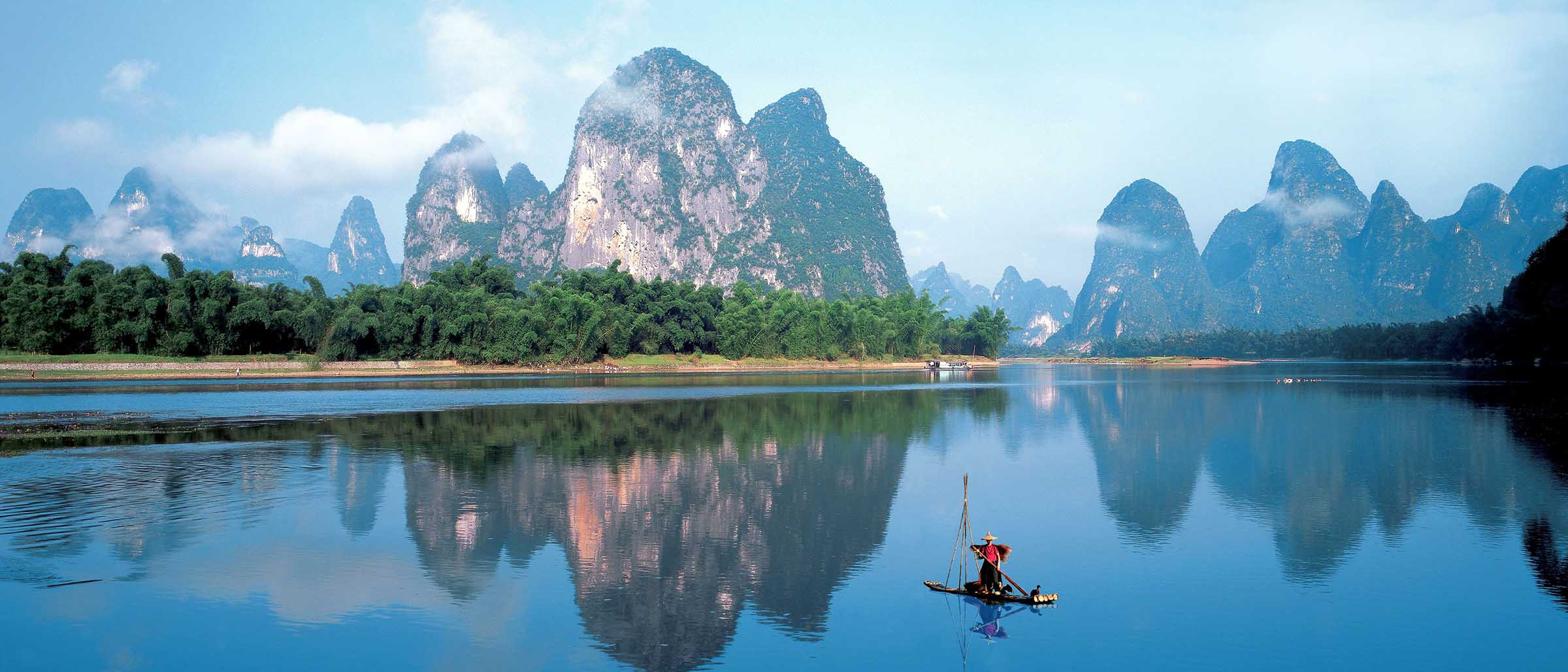
Basic Information
Chinese Name: 广西 (Guang Xi)
Administration Type: Autonomous Region
Provicial Capital: Nanning
Location: Guangxi is bordered by Yunnan to the west, Guizhou to the north, Hunan to the northeast, and Guangdong to the east and southeast
Area: 236,700 km² (91,390mi²)
Population (2017): 48.85 million
Major Ethnic Groups: Zhuang, Han, Yao, Miao, Dong,
Famous cities: Nanjing,Guilin,Beihai,Liuzhou
Guangxi Geography
Guangxi is surrounded by a long and unbroken mountains, with the central part of the Region constituting a land of gentle karsts hills and plains, known as the Guangxi Basin", Mar'ershan, 2,142 metre above sea level, is the peak of Yuechengling Mountain and the highest peak in Guangxi as well. A natura; xone was set up in the Mao'ershan area.
The Huaping Natural Rwserve Zone is located on the densely wooded hill, 1,500 metre above sea level, the north-eastern and northern part of Guangxi. With limestone covering half of the Region, Guangxi is one of the areas in China with large well-developed karsts formations.
Guangxi Climate
Throughout the region, temperatures are warm enough to assure agricultural production throughout the year. Summer lasts from April to October and is marked by enervating heat and high humidity. Winters are mild, and snow is rare. July temperatures vary between 80 and 90 °F (27 and 32 °C). January temperatures range between 40 and 60 °F (4 and 16 °C).
Because of the influence of the rain-bearing monsoon wind, which blows from the south and southwest from late April to the end of September, precipitation is abundant. Drier areas are in the northwest, while the wetter areas are in the south and east. The average annual rainfall varies from about 43 inches (1,080 mm) in the drier areas to 68 inches (1,730 mm) in the wetter zones, with a maximum reaching 109 inches (2,760 mm). Most of the precipitation occurs in the period between May and August. In the extreme south, rain bursts caused by typhoons (tropical cyclones) occur between July and September.
Tourism Resources
The picturesque scenic spots in Guangxi are famous worldwide, symbolized by Guilin, a natural beauty produced by unique karst geography. At present, the province has established several tourist attractions including three state-level natural scenic spots, six state-level natural reserves, 30 provincial-level natural scenic spots, 15 state-level cultural and historical relics, 221 provincial-level cultural and historical relics, 19 forest parks and 10 summer or winter resorts.
With karst landscape as its main tourism resources,more than 400 scenic areas and attractions have been exploited in the region.In addition,the Ling Canal,which was excavated in the Qin Dynasty,connects the upper reaches of the Guijiang River with the Xiangjiang River.It is one of the great ancient hydraulic projects in China.The region is a melting pot with the Zhuang Nationality as its main population.There are 12 ethnic groups living here for generations whose folkways are primitively simple.Beibu Bay of Guangxi Province is a pearl-producing area famous both at home and abroad,and Hepu County is praised as the “hometown of southern pearls”.
Guilin, located in northeast of Guangxi, is a cultural city which has 2000 years of history. It is famous for its Osmanthus Fragrans and beautiful landscape. It has the reputation "Guilin's scenery is the best in the world". Some famous scenic spots here are Fubo Hill, Li River, etc. Yangshuo, in the south of Guilin, has more picturesque landscape, which attracts tourists from all over the world. Nanning is the intersection of Guangxi tourism. Some popular scenic spots here are Yangmei Ancient Town, Mt. Qingxiu, South Lake Park, Detian Waterfall, etc.
Guangxi Folk Culture
Guangxi, also called Ba Gui (a large number of osmanthus trees), is known for its splendid culture and beautiful scenery. Guangxi Zhuang autonomous region is inhabited by 12 ethnic groups, including Zhuang people, Han people, Yao people, Miao people, Dong people, Mulam people, Maonan people, Hui people, Yi people, Jing people, Sui people and Gelao people.
Singing
"Singing", referring to singing folk songs, is an important way of conveying feelings in daily life for the ethnic groups in Lingnan, especially Zhuang people. It can be best embodied in the saying, "Guangxi has become a sea of songs which were all composed by Liu Sanjie." Why is Guangxi renowned as a sea of songs? The reason is simply that the residents like singing very much.
Zhuang folk songs, the representative of Guangxi folk songs, can be divided into various types. They are about love, sisters, reunions and congratulations on birthdays and relocation.
At Ge Yu (a singing fair on the third day of the third lunar month) in the Zhuang ethnic group, young people show their talents, making polished impromptu songs and singing beautiful love songs in antiphonal style about affections, expressing wishes, awarding praise, the early period of a love affair, infatuation, showing fondness, taking an oath and saying farewell.
Songs are also indispensable to many other festivals of Guangxi ethnic groups, including Miao Festival (the festival for Maonan people to offer sacrifices to dragons), Zou Po Festival(the festival for Gelao people to sing songs and make friends), Duan Festival (the festival for Sui people to offer sacrifices to their ancestors), Hua Pao Festival (the festival for Dong people to scramble for firecrackers), Da Nu Festival ("Never forget the past" Festival of Yao people), Miao Nian (New Year Festival of Miao people), Lu Sheng Festival ("Hill climbing" Festival of Miao people) and Po Hui (the festival for Miao people to take part in recreational activities).
In daily life, Guangxi ethnic groups also love singing. For instance, they sing Jiu Ge (toasting song) when drinking; they sing Lan Lu Ge (songs of "Blocking the way") and Mao Fan Ge (songs of "Asking for food from the bride") when escorting the bride; they sing Ying Bin Ge (songs of "Welcoming guests") when greeting guests. There is a custom called Xing Ge Zuo Mei (singing love songs) for young men and women.
Most Guangxi ethnic groups can sing songs about almost everything during festivals. With special characteristics, the Dong chorus is hailed as "music from heaven". "Singing" is the first element of the Guangxi ethnic culture.
Dancing
"Dancing" is an important form of ethnic culture and a kind of folk activity in Guangxi. There are various kinds of dances, like the bronze-drum dance of Zhuang, Yao and Yi people and Lu Sheng Dance (a dance with the accompaniment of a reed-pipe wind instrument) of Dong, Miao and Yi people.
Zhuang people usually perform Bian Dan Dance (a dance about agricultural work), Bamboo Dance, Chun Niu Dance (a dance of "Praying for harvest"), Lion Dance and Dragon Dance. Yao people usually perform Huang Ni Gu Dance (a dance with the accompaniment of a drum on which yellow mud is smeared). Dong people usually perform Duo Ye Dance (a collective dance). Gelao people usually perform Niu Jin Dance (a dance of "Praying for good health and a long life"). There are festivals named after "dancing", like Tiao Pan Wang (Pan Wang Jie) and Tiao Gong festival (a dance festival for Yi people to celebrate victory).
Instrument playing
"Instrument playing", like playing Lu Sheng and playing the leave, is a main folk activity for many Guangxi ethnic groups, especially Miao and Dong people. They play Lu Sheng during collective activities, such as Chi Tong Nian (a custom for Miao people to contact with one another), Da Lao Geng (a custom for Miao people to make close friends), Miao Nian, Dou Ma Festival (Miao festival of horse fighting), Lu Sheng Festival of Dong and Miao people and Duo Ye Festival of Dong people. Some play solo, while others play together, communicating their feelings through loud and clear music and matching their skills.
With beautiful scenery and flourishing bamboo, Guangxi provides abundant raw materials for people to make crude instruments. Hard-working and intelligent, Guangxi ethnic groups change ordinary bamboo into magical Lu Sheng. The instrument serves as a broad stage for them to produce a wonderful melody and show their talents, which makes "instrument playing" the third element of Guangxi ethnic culture.
Fighting
"Fighting", referring both the duel between animals and those between human beings, is a kind of folk activity preserved by many Guangxi ethnic groups.
There are various kinds of animal "fighting", including horse fighting, bullfighting, cock fighting, bird fighting and dog fighting.
Horse fighting from the Miao people in Rongshui County is the most romantic and thrilling. It is indispensable to every traditional Miao festival. It refers to a duel between two stallions fighting for the love of a mare. They try their best to fight against each other with their hooves and mouths, which is enough to impress the audience.
Cai (treading)
Cai (treading) means Cai Tang (dancing and singing), Cai Gao Qiao (walking on stilts), or Cai Huo Hai Dao Shan (fire walking and standing on the blade with naked feet).
Guangxi ethnic groups enjoy the Lu Sheng Dance, also called Lu Shang Cai Tang, which is a combination of dance and singing. It is the typical way of expressing one's friendliness through musical instruments, songs and dances.
Cai Gao Qiao of the Jing people reflects the close connection between Luo Yue culture and Han culture. Cai Gao Qiao La Wang indicates Zhuang peoples' special coastal culture – attaching the same importance to dance and singing – which is quite different from the other ethnic groups.
Cai Huo Hai Dao Shan is a rite of passage prevailed in Jinxiu county and Hezhou city. It is a test of courage for Yao male adults. This rite is called Du Jie by Yao people. Only the boys who pass the test can possess the rights of adults, such as finding a girlfriend, getting married and gaining trust from the public.
Guangxi Cuisine
Guangxi cuisine is an anomaly amongst Chinese cuisines in that it is known for borrowing elements of other styles of cuisine rather than having its own distinct flavour. It is sour, but not as sour as Hunan cuisine. It is light, but not as light as Cantonese cuisine. It is spicy, but not as spicy as Sichuan cuisine. This diversity is due to the fact that Guangxi has been heavily influenced by Cantonese culture in neighbouring Guangdong province and by the numerous resident ethnic minorities, such as the Zhuang, Yao, Dong, Miao and Bai people, to name but a few.
However, unlike many other southern Chinese styles, Guangxi is distinguished by its frequent use of noodles instead of rice. Though rice is served with every meal, as is the tradition in the south of China, many of the signature dishes in Guangxi are made using rice noodles. Guangxi signature dishes have also been heavily influenced by the Li River, which is the source of many key ingredients. From hearty river snails to fat, fleshy river fish, when you’re in Guangxi a taste of the Li River is always on the menu.
There are five different flavors of the Guangxi cuisine:
Cuisine of the Northern Guangxi Flavor
It comprises the local dishes in Guilin and Liuzhou, which are heavy in taste, thick in color, good at stewing and fond of being spicy.
Cuisine of the Southeastern Guangxi Flavor
It inludes the local cuisines of Nanning, Wuzhou and Yulin, which pay much attention to the freshness and tenderness of the food, and diversification of the ingredients.
Cuisine of the Western Guangxi Flavor
It is made up of the local cuisines of Baise and Hechi, featured by a strong national flavor. It is a good combination of various flavors, elaborately made with ordinary materials and full of variety. The dishes are light hot, delicately fragrant, tender and crisp.
Cuisine of the Coastal Guangxi Flavor
It comprises the local cuisine of Beihai, Qinzhou and Fangchenggang. It puts emphasis on the flavor and color of the dish, and is good at cooking seafood. Dishes made of freshwater fishes and poultry are quite special.
Cuisine of the Ethnic Minority Flavor
It comprises cuisines of different ethnic minorities. It shows a special love of the mountain vegetables, fungus in the mountains, edible wild herbs, and chicken and duck in the villages. It is characterized by freshness and purity in taste.
Folk Festivals
The Tiaogong Festival of the Yi people
The grandest traditional ethnic holiday for the Yi people is the Tiaogong festival, which is held from April 8 to 10 in the Chinese lunar calendar. On those days, all households steam glutinous rice, make rice wine and have a big feast with delicious pork, chicken and duck dishes. Yi people from all mountain strongholds dress themselves up and gather to dance around bamboo, attracting many others from different ethnic groups such as Zhuang, Han, Yao and Miao.
The Drying Clothes Festival in Longsheng of the Yao people
The Drying Clothes Festival kicks off in the Jinkeng village of the Longsheng county on June 6 of the lunar calendar. June 6 is said to be a day when the mythological dragon king dries his dragon robe. On that day, the Yao people will dry all the clothes worn in a year to sterilize viruses and bacteria and eliminate any bad luck from the past. They will also invite friends to their stockaded villages and dance together to celebrate the festival.
The Hajie Festival in Dongxing of the Jing ethnic group
The Hajie Festival is the most ceremonious event for the Jing ethnic group. The word "ha" is transliterated pinyin from the local language and means singing. The date of the festival varies according to different regions. The event opens at the golden beach of Dongxing County every year with a series of activities such as a singing contest, a food event, reunions for a big feast, a folk culture exhibition, an art evening show, and a competition for walking on stilts.
The Torch Festival of Yi people in Longlin
The Torch Festival falls on June 24 of the Chinese lunar calendar in Bake village of De'e Township in Longlin autonomous prefecture in Baise, South China's Guangxi Zhuang autonomous region. On that day, villagers of the Yi community perform various activities such as singing ethnic songs, playing on the "Damoqiu", a thick bamboo trapeze, and making black faces. They will prepare dishes such as chicken and goose, worship their ancestors and release cuckoos into the environment. At night, the people of the Yi ethnic group gather to dance around a bonfire.
The Panwang Festival of Yao ethnic community
On the 16th day of the 10th month of the Chinese lunar calendar, Yao people -- clad in colorful layers with elaborate embroidery -- gather to sing and dance in celebration of the Panwang Festival, when they worship their mythological ancestor Pan Hu. On May 20, 2006, the Panwang Festival was listed as among the first national-level intangible cultural heritages by the State Council.
Bama Longevity Village
Chinese name: 巴马长寿村 (Ba Ma Chang Shou Cun)
Location: Ping'an Village, Jiazhuan Country, Bama County, Guangxi Province.
Ticket: Free
Estimated tour time: 3-4 hours
Recommended time to visit: Apr- Oct
Nearby attractions: The Crystal Palace, Baimo Cave, Ming-shi Countryside, Tongling Grand Canyon.
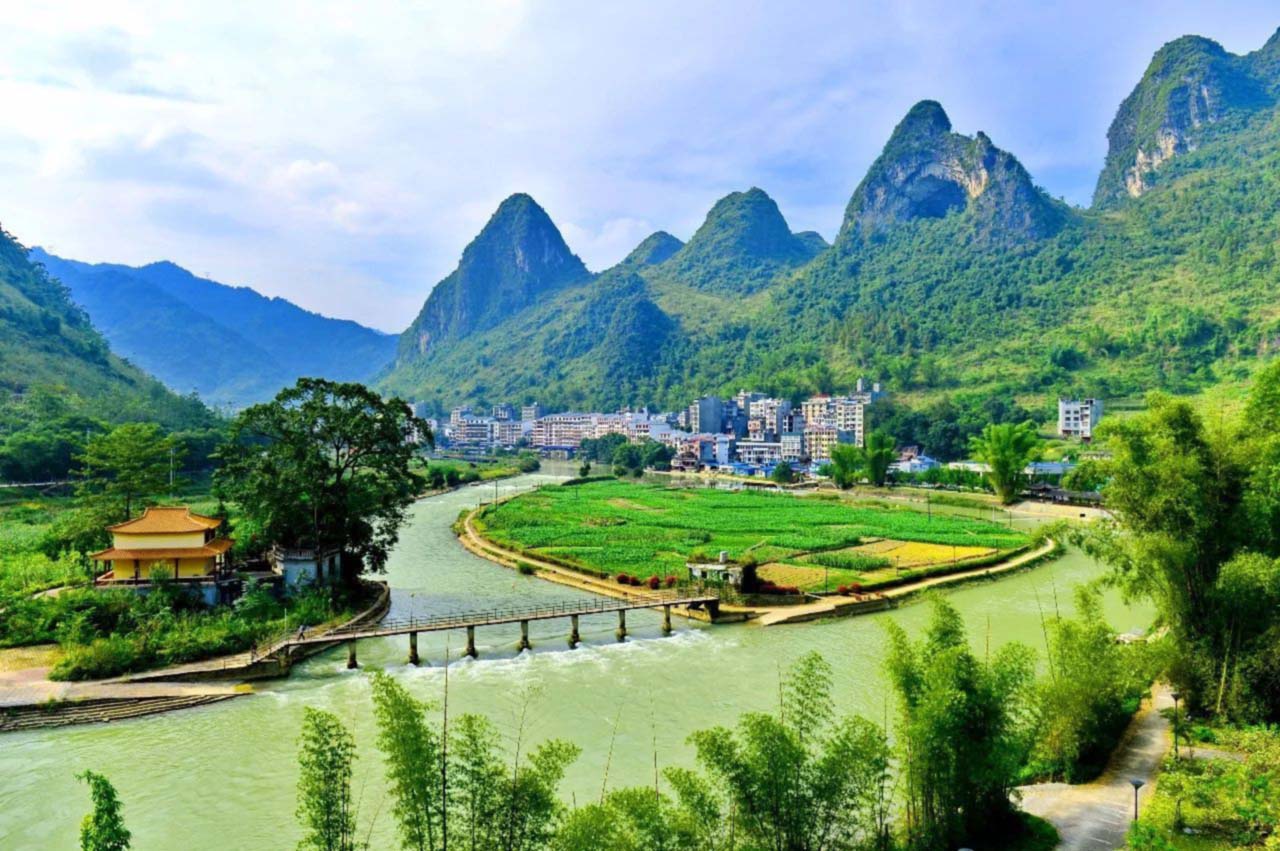
Bama Yao Autonomous County is a county in Guangxi, China. It is under the administration of Hechi City. The residents of Bama County have a reputation for longevity, and Bama has been the focus of studies from geriatricians nationwide.Out of the five areas in the world with the longest-lived populations, Bama has the highest proportion of centenarians. The area has therefore been honored as “The World Capital of Long Life and an Auspicious and Sacred Place for the Chinese.”
Bama,a scenic spot in Guangxi Province,boasts beautiful mountains and gorgeous rivers,abundant resources and pure folk customs. There are Yao, Zhuang, and mandarin and other nationalities, each creating their own history and culture, and forming independent character and style. There is Zhuang Singing Festival of March 3rd in Chinese lunar calender, acacia smoke, soil penetrating crossbow, throwing a silk strip ball of Yao minority and playing gyroscope and other primitive customs.
The unique sunshine,air,water and geomagnetism rely on and blend with each other ,that give birth to recipe for longevity. Profound longevity culture,splendid scenery together with various folk customs bring up a Heaven on Earth.
Here you will find natural attractions like Baimo Cave (“Hundred Demon Cave”), Bainiao Grotto (“Hundred Bird Rock”), and the Crystal Palace, as well as cultural attractions that probe the mysteries of long life and provide a taste of local customs.

Highlights of Bama
Longevity village
Bama Longevity Village is located in Bapan Hamlet in Pingan Village, Jiazhuan Township. It is a magical and beautiful place tucked in the mountains in Northern Guangxi.Here is much longevity old man since ancient times, most of the old man is away from illness, is the famous "world longevity of the township". Many people here have lived a very long life, ever since ancient times. It is one of the world’s famous longevity villages. The village is situated by Qingshan Mountain and the Panyang River passes around the village. Visitors can walk through a small stone arch bridge to enter the village, surrounded by beautiful scenery. The highlight of the village are the centenarians. Residents that have lived up to 100 years in age have a commemorative plate in front of their door, indicating their age and birth date.

Panyang River
Panyang River also known as Longevity River was designated as a national 4A-level scenic spot in 2009.The Panyang River originates at Qiaoyin township in Hechi's Fengshan county, and ultimately flows into Cifu Lake in Bama. It stretches a length of 145 kilometers, 60 of which is in Bama.The river's name "Panyang" comes from the Panyang Village in Bama, located at the middle section of the river. There are many centenarians in the village, hence the name "Longevity River."Typical karst landscapes can be found along the river, including karst caves and waterfalls.
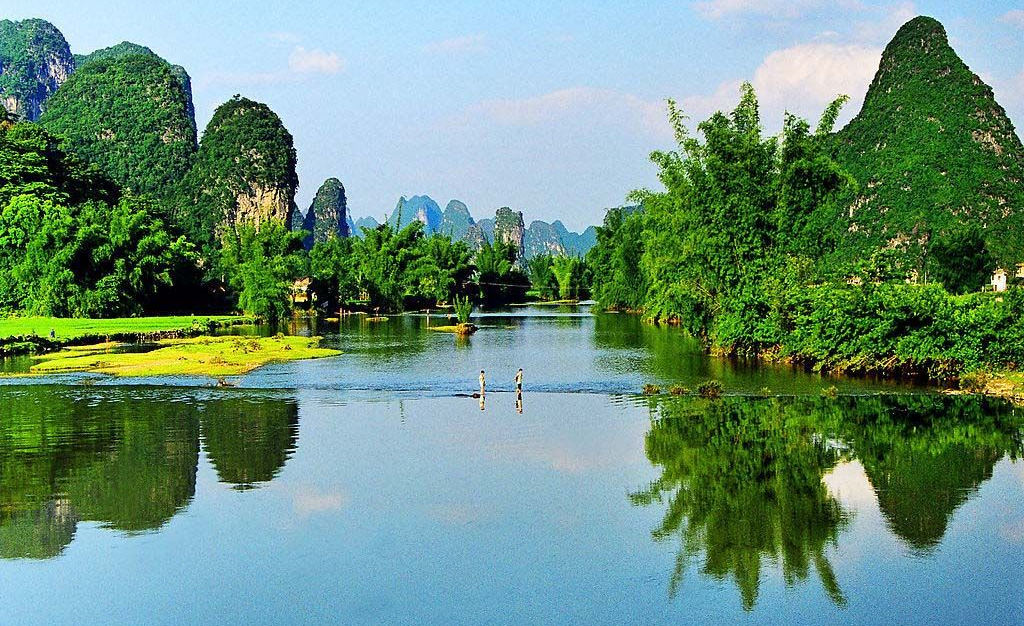
Baimo Cave
Located in the western Poyue Village, Jiazhuan Country, Bama County, Hechi City, Guangxi Province, Baimo Cave is a splendid limestone cave. Panyang River runs through it. The main scenic spots include Peacock Greeting, Monkey King of Jin Mountain and Du Fu statue, which shows the poet reciting a poem. During midsummer, numerous rock fountains flow from the top of the cave. Springs at the bottom of the cave fill up the ponds. You can wade through them in the shallow area and paddle a boat in the deep area. In the west, the springs from the cave converge with the Panyang River from Renxiang in the cave.
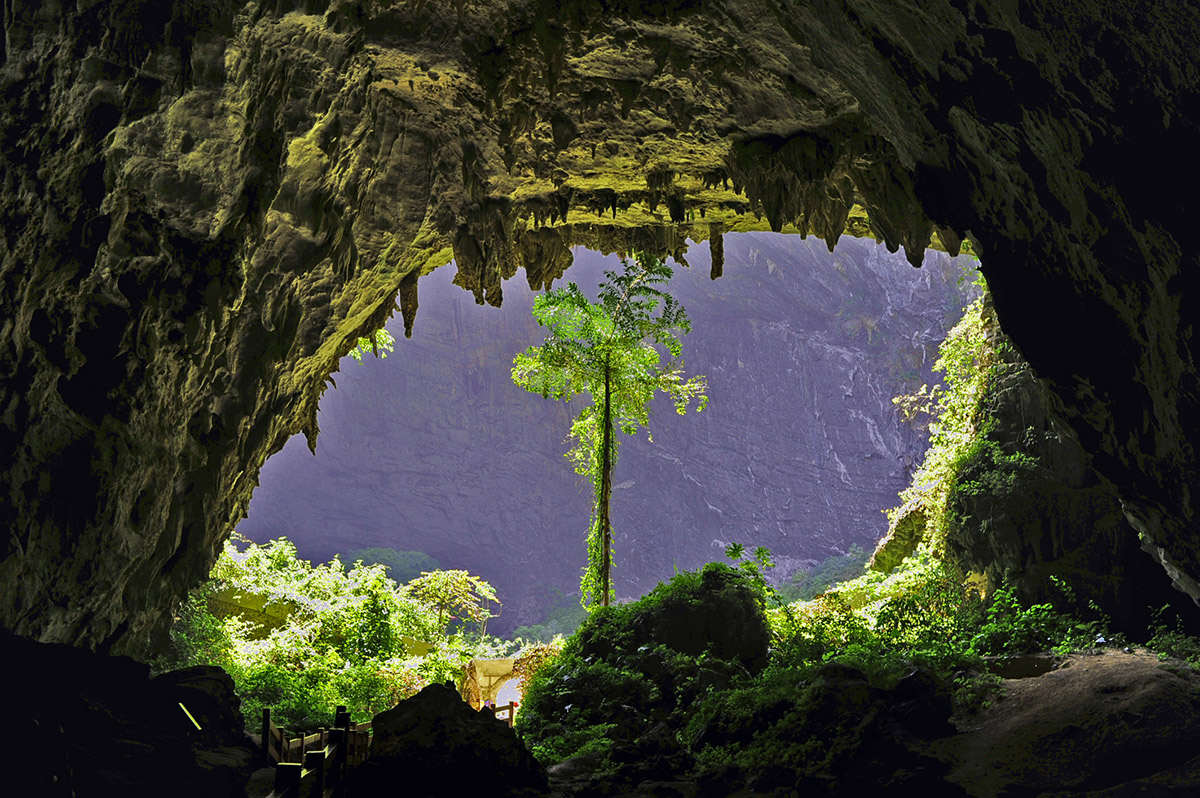
Birds Rock
Bama Birds Rock is also known as Birds Cave because of swallows inhabiting, and bats flying around the cave. There are stones of various shapes such as stone eagle, stone pillar, stone curtain and stone Guanyin. Around the stone platform are fairy dressing and conch stone, and opposite the stone snail are stone desks, stone jars and stone pine cones. The peculiar sight is like Guilin reed flute rock and is also reputed by visitors as "water reed flute rock" because it cannot be visited without boating.
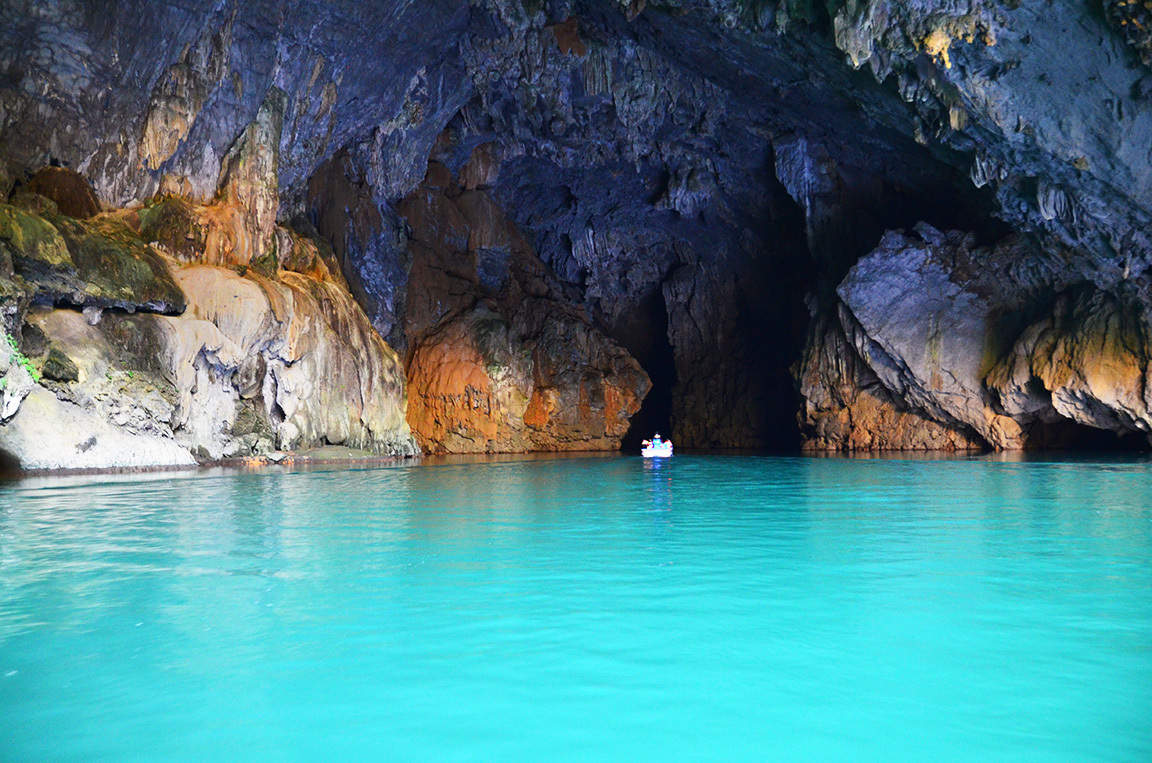
Crystal Palace
Bama Crystal Palace is located in Bama, a town well-known for its longevity in Hechi. Entering the Bama Crystal Palace, visitors see transparent mushroom-shaped crystals on the ground and different types of white stalactites hung in the air just like crystal balls, as well as crystal flowers and grass. Visitors are surrounded by shiny jade columns and jade bamboo shoots. Every attraction will make visitors marvel at the power of nature.

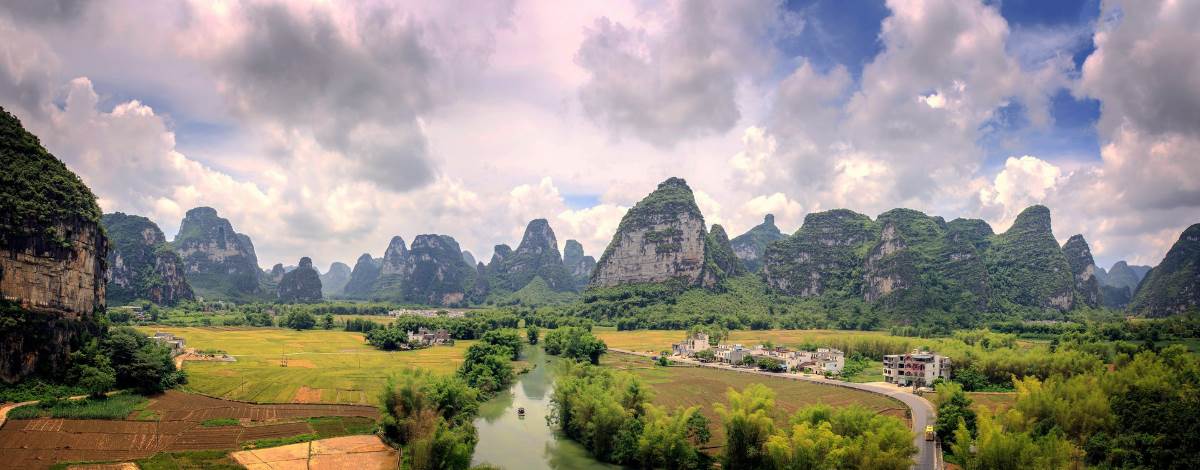
- $728.00
- 6D5N DAYS
01. A tour to the Sino-Vietnamese border, admire the various natural landscape in Detian,Jingxi and Bama, and experience the local customs of east Guangxi.02. Relaxing yourself in Mingshi Countryside, with green hills, clear waters and dotte…
Read More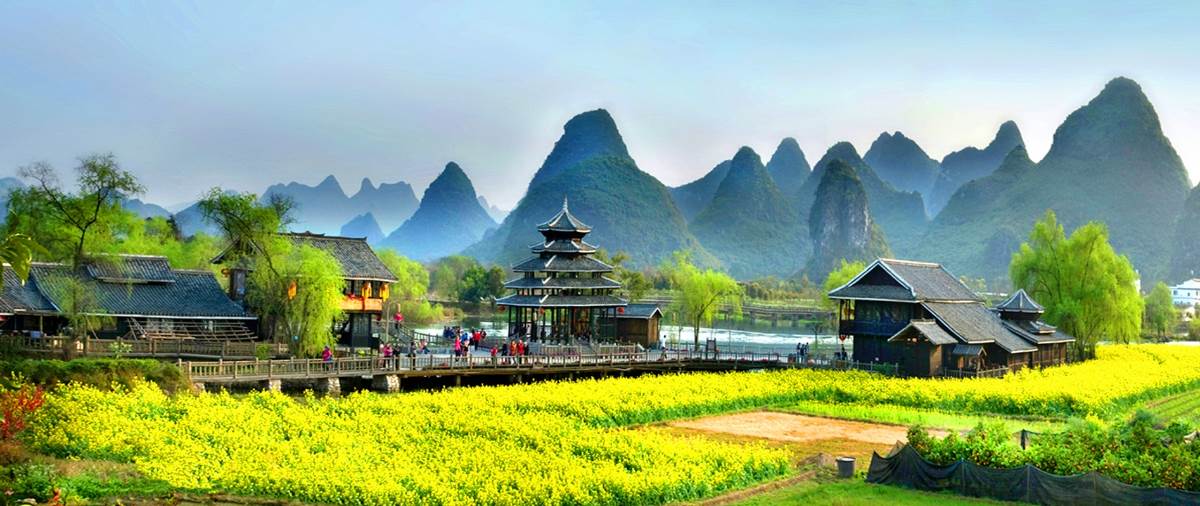
- $798.00
- 7D6N DAYS
01. A close visit of Zhuang, Dong, Miao, Yao ethnic minority people , photography and explore the charming culture and architecture of minorities.02. Relax while cruising along the picturesque Li River, this beautiful river offers fantastic …
Read More
- $1278.00
- 9D8N DAYS
01. A close visit of Zhuang, Dong, Miao, Yao ethnic minority people , photography and explore the charming culture and architecture of minorities.02. Relax while cruising along the picturesque Li River, this beautiful river offers fantastic …
Read More